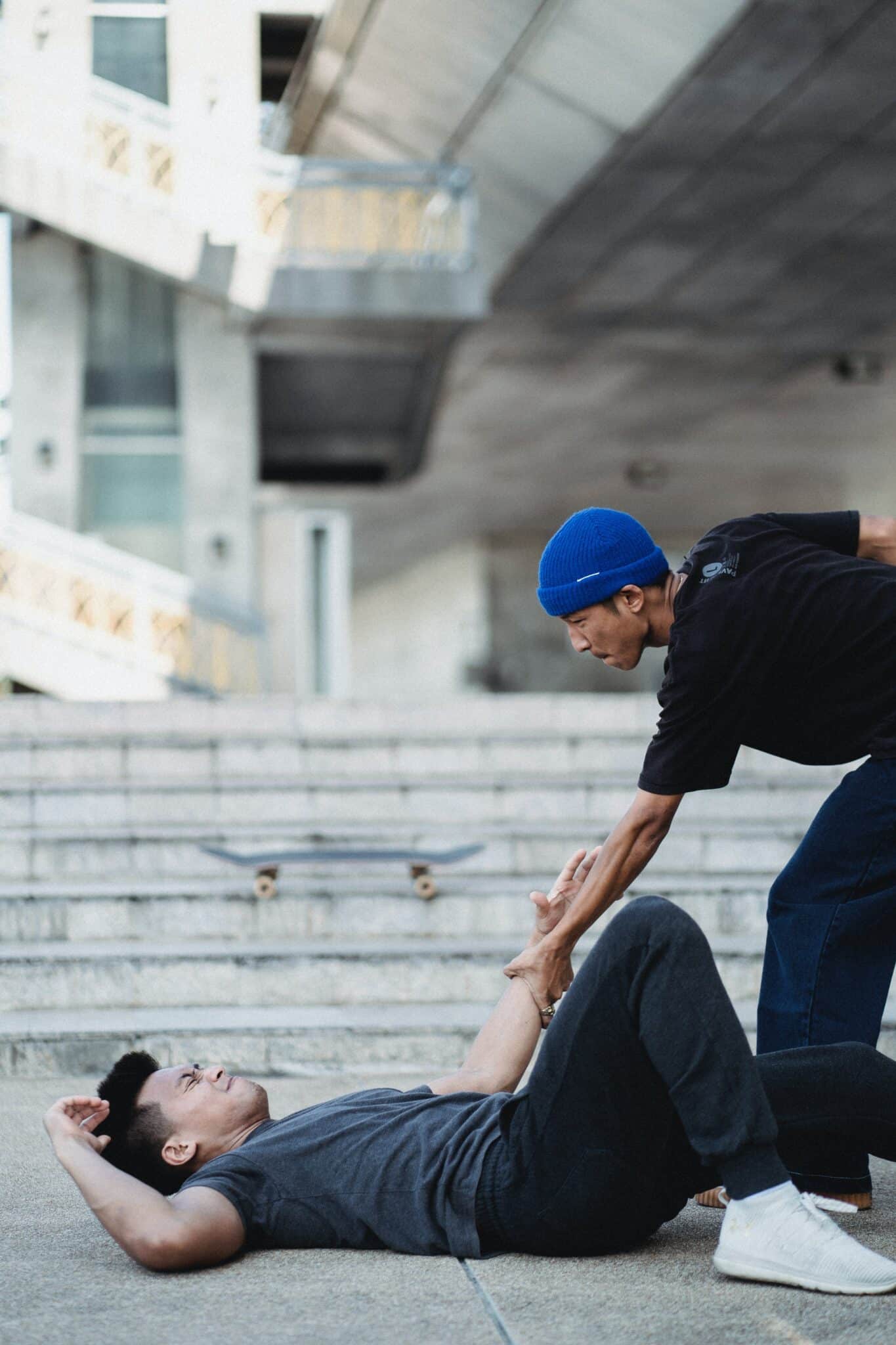What Is the Difference Between Slip and Fall vs Trip and Fall?
There are some key differences between slip and fall and trip and fall incidents. Our trip and fall lawyers can help determine which case you’re dealing with and help you get fair compensation. Here is the difference between both types of cases:
Slip and Fall Incidents
A slip and fall incident typically occurs when someone loses their footing due to a slippery or unstable surface. A wet floor could cause this, spilled liquids, icy sidewalks, or other dangerous conditions. The key element in a slip and fall case is the lack of traction between the person’s shoe and the surface, leading to a sudden and often unexpected fall.
These incidents commonly take place in various settings, including grocery stores, restaurants, workplaces, or public spaces. A store failing to promptly clean a spill or a property owner neglecting to address icy walkways could be held liable for injuries sustained in a slip and fall accident.
Documenting the conditions at the time of the incident becomes beneficial evidence. If there is proof of negligence from the property owner or manager, it strengthens the injured party’s case. Our slip and fall lawyers can help gather evidence, interview witnesses, and build a strong argument to seek compensation. Compensations can help cover medical bills, lost wages, and pain and suffering expenses.
Trip and Fall Incidents
A trip and fall incident typically involves uneven surfaces or obstacles in a person’s path. Uneven sidewalks, loose rugs, or debris can lead to a person tripping and falling. Unlike slip and fall cases, where the primary concern is the lack of traction, in trip and fall incidents, the primary issue is the presence of an obstruction or dangerous condition in the walking path.
A poorly maintained sidewalk with cracks or a store aisle cluttered with merchandise could be potential settings for a trip and fall incident. Establishing negligence involves proving that the property owner or responsible party was aware of the dangerous condition but failed to address it, leading to the injury.
Collecting evidence in trip and fall cases may involve obtaining maintenance records, surveillance footage, or witness testimonies. We use this to demonstrate the property owner’s awareness of the hazardous condition. Our trip and fall lawyer can analyze these details to build a strong compensation case.
Injury Comparison
Trip and fall incidents may result in injuries caused by the impact of colliding with an obstacle or uneven surface. This can include cuts, abrasions, and fractures, depending on the nature of the obstruction. The injuries in trip and fall cases are often more localized to the area where the individual made contact with the ground or object.
Legal Implications: Negligence and Responsibility
While slip and fall and trip and fall incidents have specific differences, the legal implications often overlap. In both cases, establishing negligence is beneficial for a successful claim. Negligence refers to the failure of a property owner or manager to maintain a safe environment. This can lead to the injury of a visitor or customer.
Understanding the specific circumstances surrounding the incident is significant in determining liability. Our slip and fall lawyer will assess whether the property owner knew or should have known about the dangerous condition. We also look at whether they took reasonable steps to address it promptly.
Trip and Fall Lawyer
At Philly Slip and Fall Guys, we can help you get fair compensation for your slip and fall or your trip and fall. Both types of cases fall under a similar category as we try to find evidence of negligence and responsibility. Contact us today to learn more about how we work through a trip and fall case.
